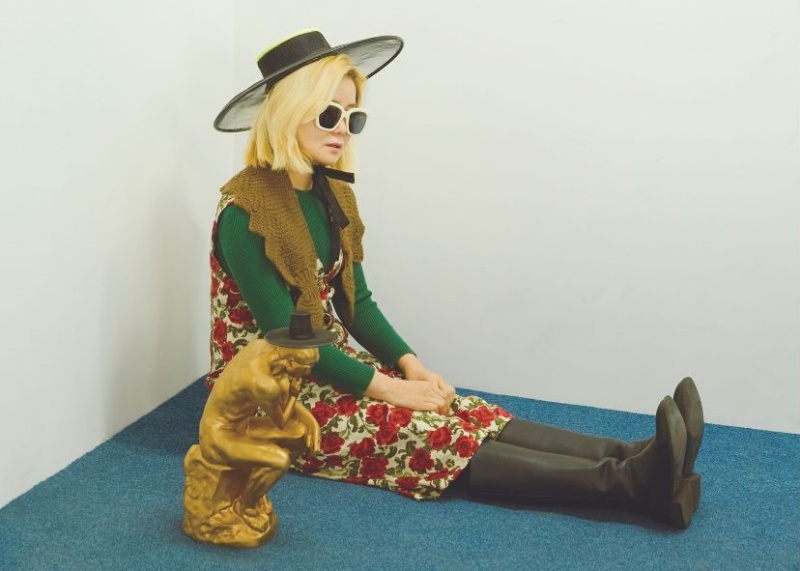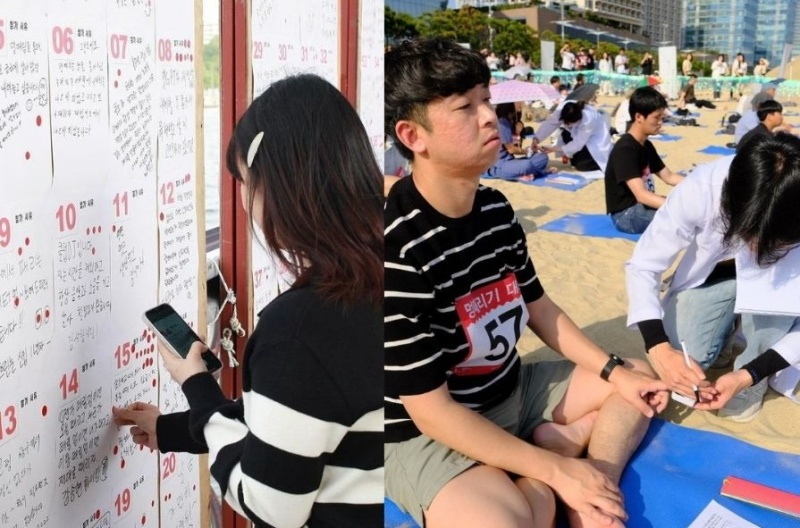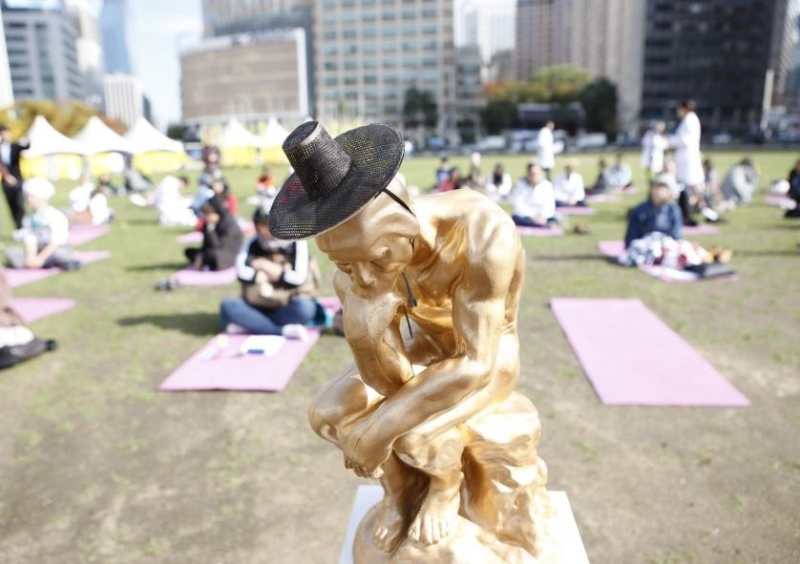- 한국어
- English
- 日本語
- 中文
- العربية
- Español
- Français
- Deutsch
- Pусский
- Tiếng Việt
- Indonesian
By Honorary Reporter Preeti Rawat from India and Minnath Azeez from Sri Lanka
Photos = Woopsyang Company
In a world that glorifies productivity and proactivity, a visual artist who goes by the pseudonym Woopsyang has introduced a unique concept that challenges conventional norms and encourages people to embrace relaxation. The interview with Woopsyang was conducted via email on 5 June.
Known for her innovative approach to art through things like civic participatory performances and installation art, she has gained global popularity for her initiative that requires participants to "space out," or pay no attention to what is happening around oneself, for 90 minutes.

Artist Woopsyang, who founded the Space-out Competition, encourages everyone to embrace the art of "spacing out."
Beginning her artistic pursuits in her mid-20s, Woopsyang graduated from Bucheon University in Bucheon, Gyeonggi-do Province, with a degree in industrial design. She developed an interest in art while working at an advertising agency and taught herself art after turning 30. After four years, she experienced burnout.
"Even if I went out to the studio every day, it was hard to stand in front of the canvas, let alone draw a picture. I spent months doing nothing and felt a lot of guilt and anxiety. After getting tired of those feelings, I decided to plan to do nothing. And before I knew, my guilt disappeared and even if I went out to the studio and did nothing at all, I didn't feel bad anymore," she said in an email interview on June 5.
Despite improving for a few months, she suffered a relapse in anxiety. She pondered why and reflected on her experience of seeing people trapped in a never-ending cycle of busyness.
"Everyone around me was working very hard and looking at them made me feel uncomfortable and anxious. I thought maybe they don't want to be idle like me, but couldn't stop because they were anxious since everyone around them was also working hard. So I suddenly thought that wouldn't it be nice if we all gathered and did nothing. Thus I came up with the concept of 'spacing out' without realizing it," she said.

The winner is determined based on art scores awarded by the public to the most aesthetically pleasing "spacing-out" performance and the technical scores from heart rates measured at 15-minute intervals.
The first Space-out Competition in 2014 was deemed a way to cheer up busy people and promote the message that being idle is OK. The rules are simple. Participants chosen from a pool of applicants have to sit still for 90 minutes. The winner is named based on skills and creativity.
Art scores are awarded based on public votes for the most aesthetically pleasing spacing-out performance, while technical scores come from heart rates measured at 15-minute intervals. Among the people with the top 10 art scores, he or she whose heart rate gradually decreases or remains stable is declared the winner.
Over the 90 minutes, the competition's organizers consider the health and safety of participants. When entering the participation zone, they get a uniform number, player guide, color cards and yoga mat. The cards are used to communicate as the players cannot speak during the competition. The participants can get a massage with a red card, cup of water with a blue and fanning with a yellow; the black is used in case of an emergency or if they wish to quit the contest.
On hilarious behind-the-scene moments at the competition, Woopsyang said, "An interesting scene I remember is when a team at the 2017 Han River Spacing Out Competition made a large banner about 3x5m with the words 'Spacing Out' spelled and used it like a blanket to cover themselves while lying down. Another incident in 2018 had a working mom apply in the hope of spacing out from child care and work, but in the end, she couldn't participate because of the same reason, she had to take care of her children on the day of the competition."

The winner of the Space-out Competition receives a trophy shaped after Rodin's famous sculpture "The Thinker" but with a gat, a traditional men's hat.
The winner gets a golden trophy in the form of Rodin's famous sculpture "The Thinker" that wears a gat, a traditional male hat. On the design, the artist said, "I thought spacing out, meditation and thinking were all the same thing so I used the famous sculpture. Additionally, I put on the gat because it was worn by scholars, who didn't belong to the working class; they were relaxed and had a lot of time. In that sense, adding the gat means that we should stay relaxed like the scholars of the past."
Over the years, the competition has attracted a massive following abroad as well. Beijing and Hong Kong in China, Taipei, Taiwan, and Rotterdam Netherlands have hosted their versions of the event, and media like the BBC, Washington Post, Guardian and Chicago Tribune.
Expressing surprise over the contest's popularity, Woopsyang said, "It was strange at first that people overseas were also showing interest in this competition because I thought Koreans were the world's busiest people, but a competitor from Rotterdam said, 'We are also living a busier life than before. We also work without a day off.'"
The artist said she hopes to launch World Spacing-Out Day where people across the globe can stop for just 10 minutes a day. By encouraging everyone to space out, she wants to inspire a collective global performance that disrupts the busyness ingrained in modern society.
"Many people still think that a blanking- or spacing-out competition is pathetic," she said. "To those people, I want to say that when we work hard and earn money, we give ourselves small luxuries like going to a high-class restaurant and buying clothes or even coffee almost the price of an entire meal. I think that if you work hard, you earn that time but people fill the time they earn with more work. Wouldn't it be nice to have the luxury of time for a cup of coffee? The luxury of free time is spacing out."
msjeon22@korea.kr
*This article is written by a Korea.net Honorary Reporter. Our group of Honorary Reporters are from all around the world, and they share with Korea.net their love and passion for all things.